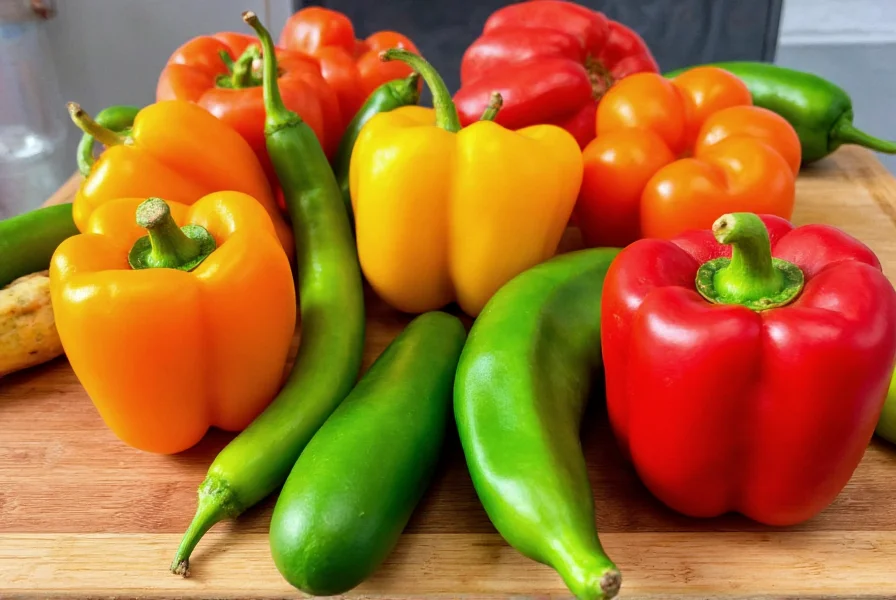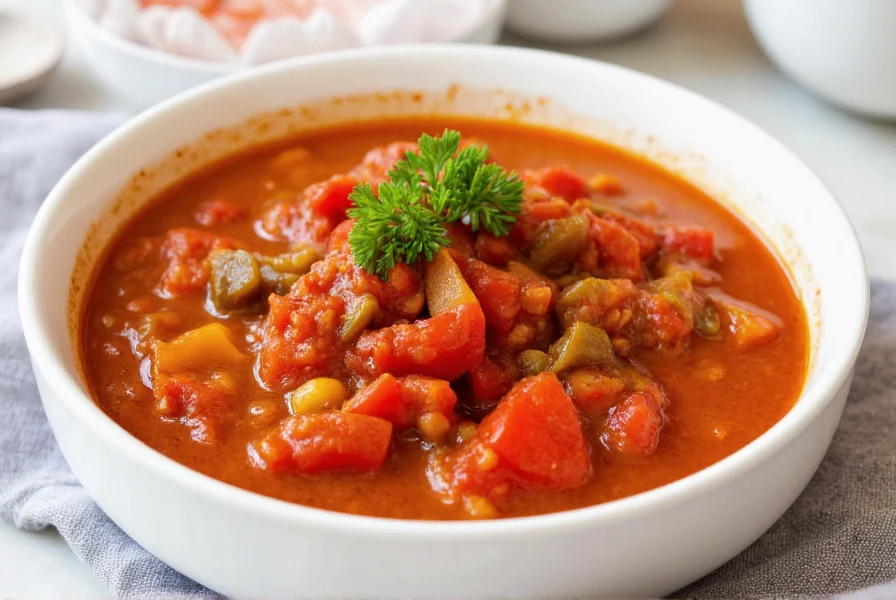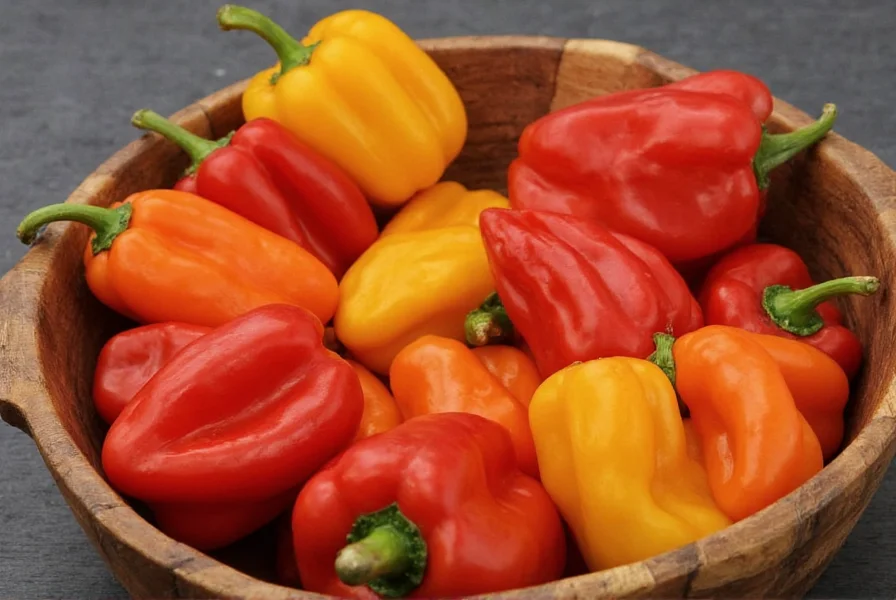Peppers transform ordinary meals into vibrant culinary experiences, but selecting the right recipe for your specific pepper variety makes all the difference. Whether you're working with sweet bell peppers, fiery habaneros, or aromatic shishitos, understanding each pepper's characteristics ensures optimal flavor and texture in your dishes. This guide delivers tested pepper recipes that highlight each variety's unique qualities while providing practical cooking techniques you can implement immediately.
Understanding Pepper Varieties and Their Best Uses
Not all peppers serve the same purpose in the kitchen. Recognizing the differences helps you choose appropriate pepper recipes for your ingredients:
| Pepper Type | Heat Level (Scoville) | Best Cooking Methods | Signature Recipe Applications |
|---|---|---|---|
| Bell Peppers | 0 SHU | Roasting, stuffing, stir-frying | Stuffed peppers, fajitas, ratatouille |
| Jalapeños | 2,500-8,000 SHU | Grilling, pickling, blending | Salsas, poppers, infused oils |
| Serranos | 10,000-23,000 SHU | Raw in salsas, quick cooking | Pico de gallo, hot sauces, guacamole |
| Habaneros | 100,000-350,000 SHU | Finely minced, long simmering | Caribbean stews, fruit salsas, hot sauces |
| Shishito Peppers | 50-200 SHU | Quick blistering, grilling | Japanese-style appetizers, salads |

Essential Techniques for Perfect Pepper Recipes
Master these fundamental techniques to elevate your pepper recipes from good to exceptional:
Preparation Methods
Proper preparation maximizes flavor while minimizing waste. For bell peppers, slice vertically from stem to base to preserve structural integrity in stuffed pepper recipes. When handling hot peppers, wear gloves to prevent skin irritation and always remove seeds and white membranes for milder heat. For roasted pepper recipes, place whole peppers directly over gas flames or under broilers until charred, then steam in a covered bowl before peeling.
Cooking Approaches
Different cooking methods highlight various pepper characteristics. Quick sautéing preserves crunch in pepper stir-fry recipes, while slow roasting develops complex sweetness in stuffed pepper recipes. For meal prep friendly pepper recipes, roast peppers until just tender—they'll maintain better texture when reheated compared to fully cooked peppers.
7 Tested Pepper Recipes for Every Occasion
1. Mediterranean Stuffed Bell Peppers (Best for Meal Prep)
This protein-packed recipe keeps beautifully throughout the week. Combine 2 cups cooked quinoa, 1 cup crumbled feta, 1 diced zucchini, 1 cup chickpeas, and chopped fresh herbs. Stuff into halved bell peppers, top with tomato sauce, and bake at 375°F for 25 minutes. These healthy pepper recipes provide complete meals ready in under 40 minutes.
2. Smoky Jalapeño Popper Dip (Easy Pepper Recipes for Beginners)
Remove seeds from 6 jalapeños and roast until blistered. Blend with 8 oz cream cheese, 1 cup shredded cheddar, 1/2 cup sour cream, and 1/4 cup diced bacon. Bake at 350°F for 20 minutes until bubbly. Serve with tortilla chips for a crowd-pleasing appetizer that showcases jalapeño's flavor without overwhelming heat.
3. Sweet Pepper and Onion Sheet Pan Dinner
Cut 3 different colored bell peppers and 2 red onions into 1-inch chunks. Toss with 2 tbsp olive oil, 1 tsp smoked paprika, salt, and pepper. Roast at 425°F for 20 minutes, then add pre-cooked chicken sausage and roast 10 more minutes. This simple pepper recipe requires only one pan and delivers vibrant flavors perfect for weeknight dinners.
4. Shishito Pepper Salad with Citrus Vinaigrette
Blister 12 oz shishito peppers in hot oil until charred but still crisp. Toss with mixed greens, segmented oranges, sliced red onion, and a dressing of rice vinegar, honey, and sesame oil. This refreshing pepper recipe highlights shishitos' delicate flavor while providing a nutrient-dense meal.
5. Roasted Red Pepper Hummus (Healthy Pepper Recipes)
Blend 1 cup canned chickpeas, 1/2 cup roasted red peppers (drained), 2 tbsp tahini, 1 garlic clove, 2 tbsp lemon juice, and 1/4 cup olive oil until smooth. This easy pepper recipe creates a vibrant dip with deeper flavor than traditional hummus, perfect for crudités or sandwiches.
6. Spicy Pepper and Mango Salsa
Dice 1 ripe mango, 1 red bell pepper, 1 jalapeño (seeded), and 1/4 red onion. Mix with lime juice, cilantro, and salt. This sweet and spicy pepper recipe balances heat with tropical sweetness, ideal with grilled fish or chicken.
7. Hungarian Pepper Stew (Tikamass)
Sauté 2 diced onions until golden, add 3 diced bell peppers and 2 tbsp sweet paprika. Cook until peppers soften, then add 1 lb ground pork and 1 cup tomato sauce. Simmer 30 minutes for a hearty Eastern European pepper recipe that showcases sweet peppers' versatility.

Pepper Storage and Meal Prep Strategies
Extend your peppers' shelf life with these professional techniques. Store whole bell peppers in the crisper drawer for up to 2 weeks. For cut peppers, place in airtight containers with a slightly damp paper towel. Roasted peppers keep for 5 days refrigerated or freeze beautifully for up to 6 months—perfect for maintaining a supply of ingredients for quick pepper recipes.
When meal prepping with peppers, cook them just until tender-crisp. Fully cooked peppers become mushy when reheated. For pepper recipes designed specifically for meal prep, incorporate peppers into egg-based dishes like frittatas or grain bowls where texture changes are less noticeable.
Avoiding Common Pepper Recipe Mistakes
Many home cooks make these preventable errors with pepper recipes:
- Overcooking hot peppers - Destroys flavor complexity while maintaining heat. Add habaneros and serranos late in cooking.
- Not adjusting for ripeness - Red bell peppers are sweeter than green; adjust sugar content accordingly in pepper recipes.
- Using the wrong oil - High-heat cooking with peppers requires oils with high smoke points like avocado oil.
- Ignoring pepper compatibility - Some peppers (like poblanos) work better stuffed, while others (like fresnos) excel raw in salsas.
Frequently Asked Questions
What's the best way to reduce heat in spicy pepper recipes?
Remove all seeds and white membranes, which contain most capsaicin. Soak diced hot peppers in vinegar or lemon juice for 10 minutes before using. For immediate heat reduction while cooking, add dairy products like yogurt or sour cream, which bind to capsaicin molecules.
Can I substitute different pepper varieties in recipes?
Yes, but consider heat level and flavor profile. Bell peppers can replace cubanelles in stuffed recipes. Poblanos work for jalapeños in cooked dishes (use 2x quantity). For heat-sensitive substitutions, use sweet banana peppers instead of serranos. Always adjust quantities based on the Scoville rating of your substitute pepper.
How do I prevent peppers from becoming soggy in recipes?
Dry peppers thoroughly before cooking. For stir-fries, cook peppers separately from other vegetables first. When roasting, avoid overcrowding the pan. For stuffed pepper recipes, pre-cook the filling completely before stuffing to minimize baking time. Sheet pan pepper recipes work best when peppers are cut uniformly and tossed with just enough oil to coat.
What are the health benefits of cooking with different peppers?
Bell peppers provide high vitamin C content, especially when eaten raw. Cooking tomatoes with peppers increases lycopene absorption. Hot peppers contain capsaicin, which may boost metabolism. Red peppers have nearly 10x more beta-carotene than green varieties. All peppers contribute fiber and antioxidants to your diet, with deeper colored varieties generally offering more nutritional benefits.
Which pepper recipes work best for freezer meal prep?
Roasted pepper sauces, pepper-based soups, and stuffed pepper casseroles freeze exceptionally well. Avoid freezing raw pepper salads or dishes where texture is critical. For best results, freeze roasted peppers flat on baking sheets before transferring to containers. Most cooked pepper recipes maintain quality for 3-6 months in the freezer when properly packaged.











 浙公网安备
33010002000092号
浙公网安备
33010002000092号 浙B2-20120091-4
浙B2-20120091-4